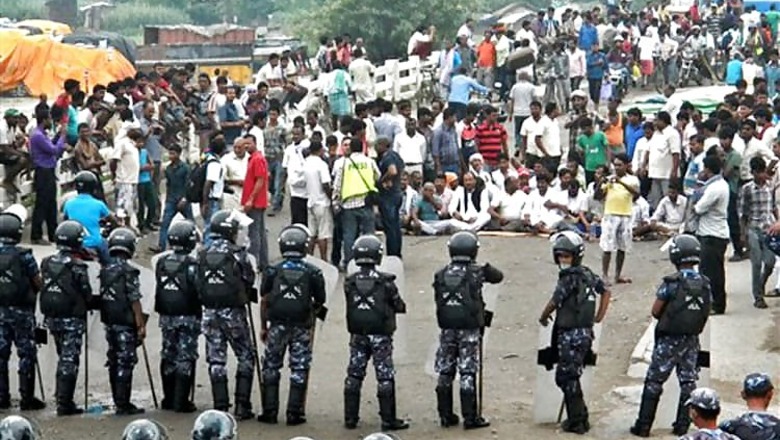
views
Kathmandu: Nepal police shot and killed two protesters in separate incidents in the Himalayan nation's restive southern plains as they tried to break up demonstrations against a new constitution, police said on Sunday.
The nascent republic, wedged between China and India, has been in turmoil since September when it adopted a new constitution. People from ethnic Madhesi groups living along the border with India, began protests saying Nepal's first republican charter did not accommodate their interests.
Protesters have blockaded trucks from neighbouring India for more than two months, leading to acute shortages of fuel and medicine. Nepal blames New Delhi for siding with the protesters, a charge India denies.
Late on Saturday, police fired at two places in Saptari district, 150 km (90 miles) southeast of Kathmandu, where protesters were defying prohibitory orders and blocking a highway, police official Bhim Dhakal said from district capital Rajbiraj.
"One protester was killed at Bhardaha and another at Rupani," Dhakal said.
"We were forced to fire in self-defence after protesters began hurling petrol bombs, empty bottles, stones and sticks at police," he said. More than 40 people, including 25 police, were injured.
Laxman Lal Karna, a senior leader of the Sadbhavana Party organising the protests, said protesters were shot while sitting peacefully on the road to block vehicular traffic and enforce a strike.
With the landlocked nation of 28 million people recovering from its worst earthquake on record, Nepal has turned to China to meet its fuel needs, breaking an Indian monopoly.
The incident in Saptari came as U.N. Secretary-General Ban Ki-moon urged all sides to resolve their differences in a peaceful and flexible manner.
Several rounds of negotiations between the government and protest leaders have failed amid differences over how to change the internal boundaries of newly created federal states.
Protesters say the entire southern plain region, Nepal's bread basket, must not be split into more than two federal provinces. They now form part of six of the seven provinces dominated by hill dwellers.
About 50 people have died in protests that began in September.

















Comments
0 comment